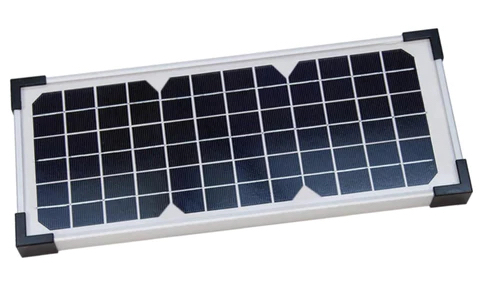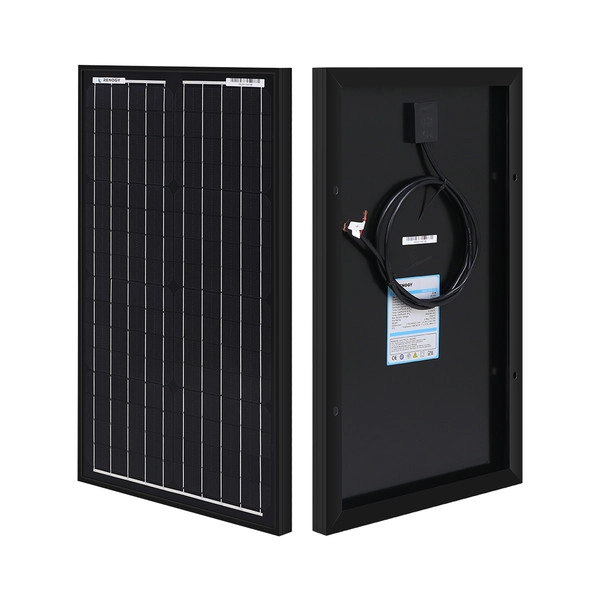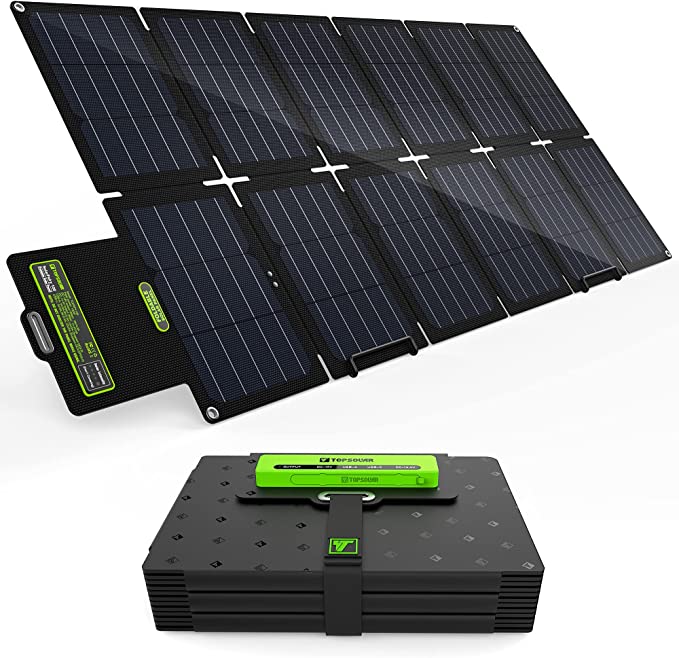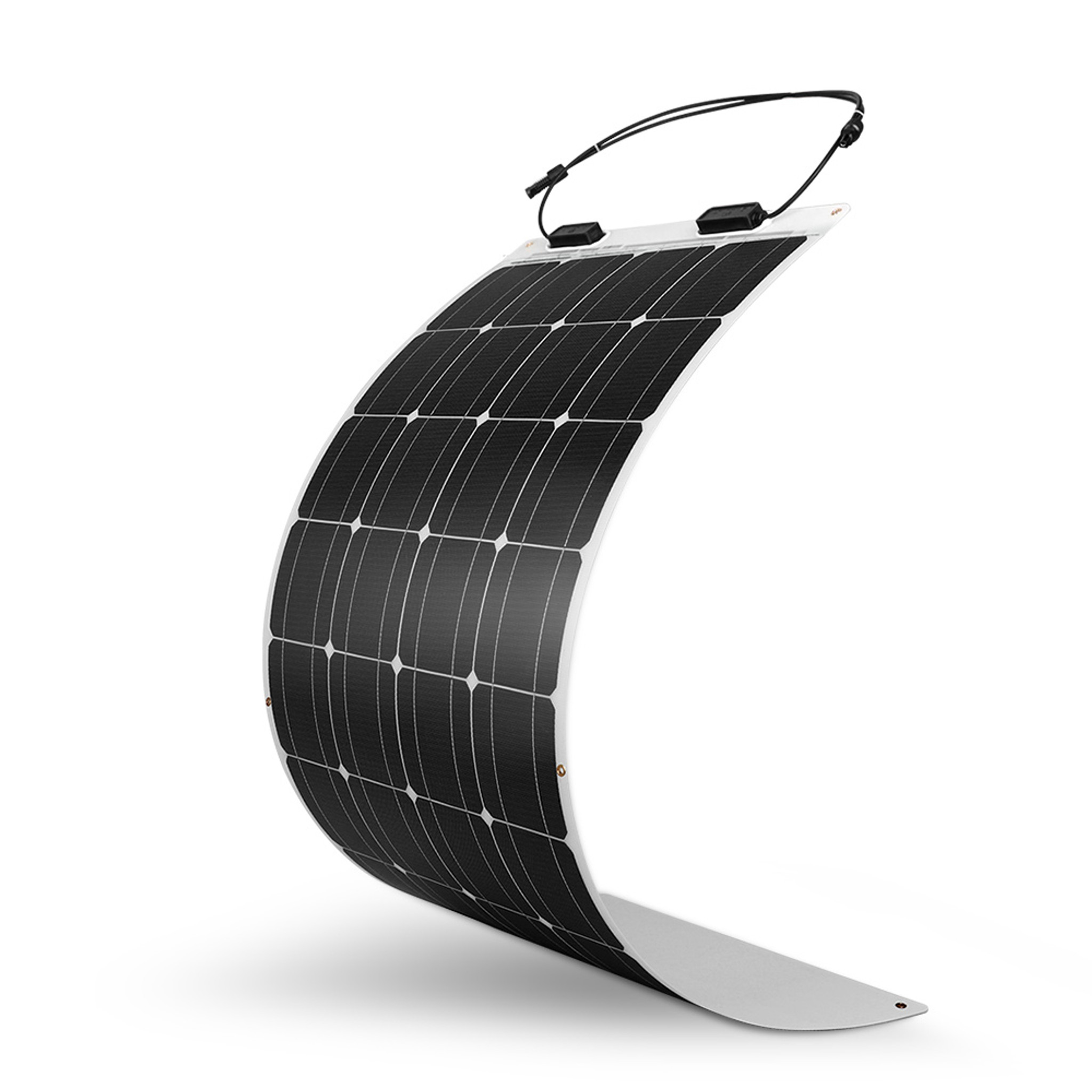Can a 100 watt solar panel help you tap into the benefits of solar power?
Without knowing anything about your solar needs, I would have to say ‘definitely maybe’. On the bright side, there is a very good chance that a panel of this size will work for you in some capacity.
Why don’t I tell you about how much these panels cost, what kind of power they produce, and what they will run. Then you should have a better idea if a 100 Watt solar module will suit your needs?
Before we get to those details, however, let’s take a look at where a 100W solar panel fits into the grand scheme of things in the solar panel family (we might also learn a little more about solar panels in the process).
The 100 Watt Solar Panel vs Other Panel Sizes
At the small end of the solar spectrum we have solar panels that produce comparatively tiny amounts of power. For instance, you can pick up a 2 watt solar panel on Amazon for about ten bucks. These panels can be great for science experiments, powering toys and small devices, or maintaining 12 volt batteries.
As we move further up the size scale, we find other affordable solar power options that come in the 5 to 30 Watt range. These small to medium size panels come in the rigid variety as well as in foldable and roll-up form (These portable panels are great for keeping your iPhone charged when you’re on a camping trip or hike). Solar panels in this range are also great for use with electric fences, gate openers, laptops, and other electronic gadgets.
We’ll get to the 100 Watt solar panel information in a second, but first let’s take a quick look at the panels on the larger end of the spectrum. A rooftop solar installation usually consists of modules that are larger than a 100 Watt solar panel. In fact, many solar companies now produce panels that are rated for 450 watts of power. So it would appear that some solar manufacturers definitely believe that bigger is better.
Now that we know the range of solar panel sizes available, let’s get back to our old friend the 100 Watt solar panel. First off, we’ll take a look at the factors you should keep in mind when deciding if this panel size is right for you.

How to Choose a Solar Panel Size
When deciding which size of solar panel is right for you, these three factors should guide your decision:
- Power
- How much power do you need? If you’re charging a battery, you’ll need to know how many amp hours you’ll need to replenish each day. We’ll give you some tips on figuring this out a little later.
- Portability
- Will your panel be attached to a shed or will it be taken on hikes to charge your iPhone? Your panel plans will dictate whether a rigid panel will suffice or whether a flexible or folding panel would be a better fit.
- Budget
- Although solar panels aren’t as expensive as they used to be, cost is still a consideration. We’ll give you a range of the costs you can expect.
Now let’s take a look at how much power we can expect from a 45 watt panel.
How Much Power Will a 100 Watt Panel Provide?
When you know how much power your solar panel will provide, you can determine how long it will take to charge your devices and batteries. This won’t be an exact number, however, and will be affected by:
- Intensity of sunlight
- Charge controller quality
- Solar panel efficiency
- Battery age and type
To get a rough idea of what kind of power you should expect from your solar panel, we’ll need to do a little math (don’t worry, we’ll keep it simple!).
To figure out how much electric current a 100 watt panel will produce, we simply divide the power (watts) by the voltage (volts). This will vary slightly for different 100 watt solar panels due to different ratings for maximum power output (Pmax) and voltage at maximum power (Vmp). When all is said and done, your 100W panel should provide about 5.5 amps of current in full sunlight.
Now that we know how many amps are being produced by our panel, we need to determine the number of ‘amp hours’ (Ah) that are in our battery or device. For instance, let’s say we’re charging a 20Ah lithium battery.
Now we just divide the amp hours in the battery by the amps our solar panel produces:
20 amp hours = 3.6 hours
5.5 amps
So, without taking into account all of the factors we mentioned above, it will take a little over three and a half hours to fully charge your 20Ah battery with a 100 watt solar panel. This calculation should also allow you to get an approximate charging time for other gadgets and power banks.
What Will A 100 Watt Solar Panel Run?
Now that we know how much electric current we can expect from a 100 watt panel, let’s take a look at some of the uses for this panel:
- Off-grid charging of solar batteries
- Pairing with a ‘solar generator’ for backup power
- Marine or RV power
- Shed power for lights and lawn mower batteries
- Smaller Devices (fans, cell phones, lamps, wifi routers laptops)
But remember this solar power truth: A solar panel will only provide power when the sun is shining! This is why we recommend pairing your solar panel with a charge controller and a solar battery. Your panel will charge the battery and you can use the battery to charge your devices (even when the sun isn’t shining!).
Now let’s take a look at how much one of these panels will set you back.
How Much Does A 100 Watt Solar Panel Cost?
As with most issues involving solar power cost, there is not a cut and dried answer. There is actually quite a range in prices for 100 Watt panels.
The difference in cost can be the result of numerous factors. One of these factors is solar panel efficiency. A monocrystalline solar panel is usually more efficient than a polycrystalline panel and usually costs more.
Whether the efficiency of solar panels is a good reason to spend additional money depends on whether space is at a premium. More efficient panels can produce the same amount of power as less efficient panels while taking up a smaller amount of space.
Also, if you’re getting more than just a panel you can expect to pay more. For instance, if you go with a 100 Watt module as part of a plug ‘n’ play solar kit with mounting hardware, wiring, connectors and charge controller, the price will be a little higher.
With all that being said, the following options will give you a general idea of the prices you can expect. We’ve provided an example of a rigid panel, a foldable panel, and a flexible panel (these prices are subject to change):
- The Renogy 100 Watt 12 Volt Monocrystalline Solar Panel is currently available for $104.99. This panel is ideal for RVs, motorhomes, cabins, marine areas, and home backup power.

- The Topsolar SolarFairy 100W Portable Foldable Solar Panel sells for $179.99. This takes all the power of a 100 watt panel and puts it in a very portable package. Recommended for mobile phones, power banks, tablets, laptops and 12V batteries.

- The Renogy 100 Watt 12 Volt Flexible Monocrystalline Solar Panel is on sale for $189.99. This panel is lightweight, thin, and capable of flexing up to 248 degrees. Ideal for RVs, Campers, Boats, and many others applications.

That should get you started in your quest for a 100 Watt solar panel and hopefully before too long you might be adding some more panels to your system. If you want to learn about other solar panel sizes, check out the following pages:
Good luck!
